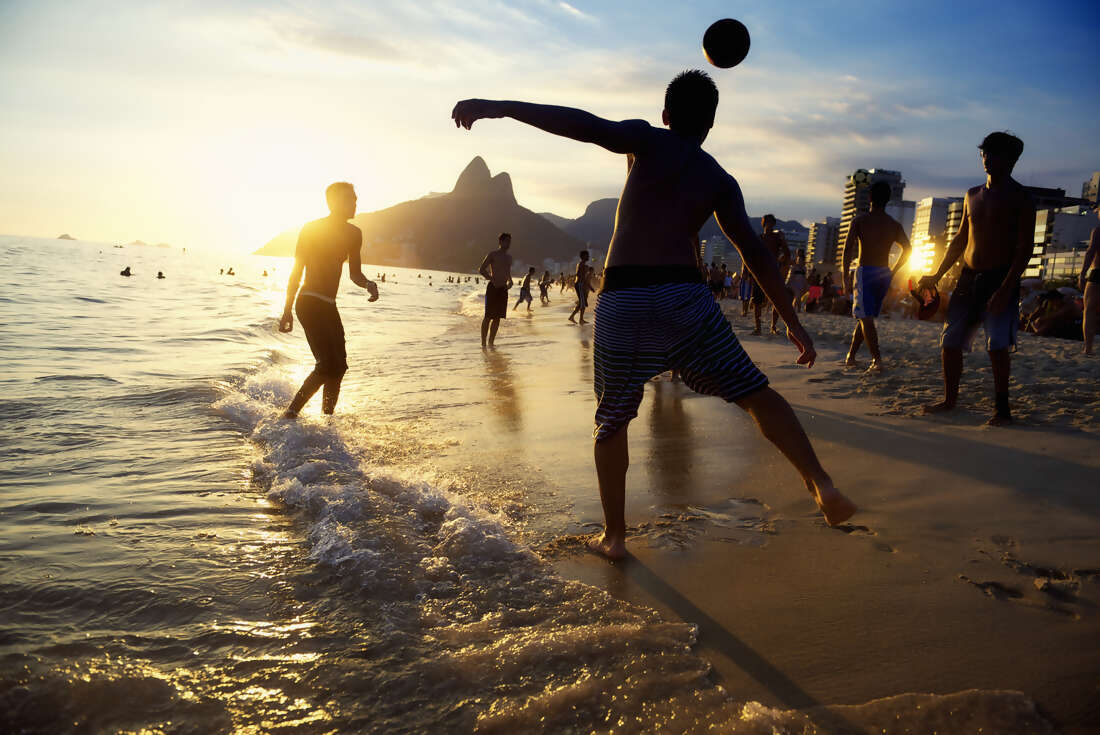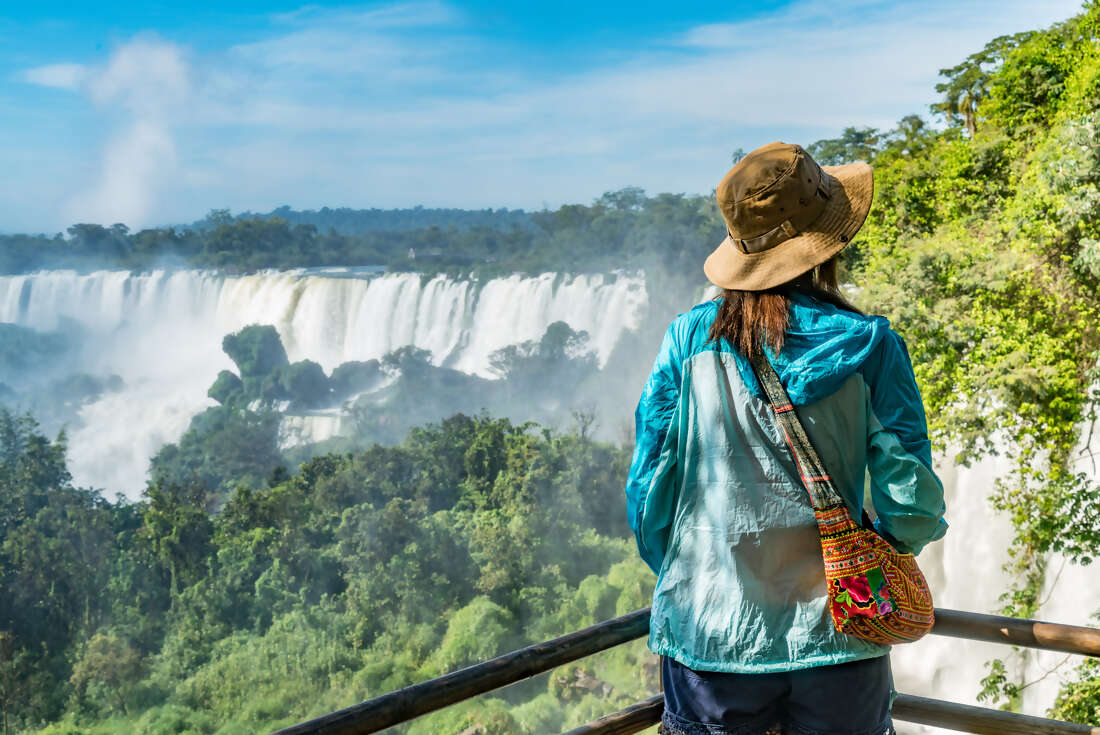 Get ready for the ultimate South American adventure on this journey from the Andean heights of Ecuador through Peru, Bolivia, Argentina and Uruguay until finally arriving in the vibrancy of Brazil. Explore the Amazon Jungle, trek the Inca Trail, take a 4x4 through the Salar de Uyuni, experience life on a working estancia and witness the mighty Iguazu Falls. Discover the rhythm of the samba, salsa and tango, get off the beaten track, visit diverse and amazing natural wonders and collect a lifetime of memories on this truly epic adventure. With plenty of free time and a do-it-yourself approach, this is the perfect way to explore South America.
Get ready for the ultimate South American adventure on this journey from the Andean heights of Ecuador through Peru, Bolivia, Argentina and Uruguay until finally arriving in the vibrancy of Brazil. Explore the Amazon Jungle, trek the Inca Trail, take a 4x4 through the Salar de Uyuni, experience life on a working estancia and witness the mighty Iguazu Falls. Discover the rhythm of the samba, salsa and tango, get off the beaten track, visit diverse and amazing natural wonders and collect a lifetime of memories on this truly epic adventure. With plenty of free time and a do-it-yourself approach, this is the perfect way to explore South America.Highlights
Hike through the Amazon rainforest and sample fruit, chocolate and if you’re brave enough, tree worms in a local indigenous farming community
Whether you trek the classic Inca Trail, the Inca Quarry Trail or take the scenic train route, the ancient ruins of Machu Picchu are a majestic destination, no matter how you get there
The floating islands of Uros on Lake Titicaca are a marvel of concept, construction and history. Take a boat tour on the lake and spend the night with a local family in a traditional island community
The landscapes of Salar de Uyuni are so unique they’re almost extra-terrestrial. Embark on a three-day adventure via 4WD across the rocky Atacama Desert and the largest salt lakes in the world - passing cactus islands, train cemeteries and mineral lakes teeming with flamingos
Harness your inner gaucho during a three-day stay at a working estancia in Uruguay. Whether it’s getting involved in daily chores around the farm, working with livestock or simply relaxing on the ranch, experience a unique way of life and Uruguayan hospitality at its best
The mighty Iguazu Falls straddles the border between Argentina and Brazil, and you’ll be able to see it from both sides
The heaving, hedonistic metropolis of Rio de Janeiro is a great way to end the trip. Party down with the locals and experience a culture at the beating heart of Brazil














- You will visit the following places:
-

Quito
San Francisco de Quito, most often called Quito, is the capital city of Ecuador in northwestern South America. It is located in north-central Ecuador in the Guayllabamba river basin, on the eastern slopes of Pichincha, an active stratovolcano in the Andes mountains. With a population of 1,397,698 according to the last census (2001), and, as estimated by the municipality, approximately 1,504,991 in 2005, Quito is the second most populous city in Ecuador, after Guayaquil. It is also the capital of the Pichincha province and the seat of Metropolitan District of Quito. The canton recorded a population of 1,842,201 residents in the 2001 national census. In 2008 the city was designated as the headquarters of the Union of South American Nations.
-

Cuenca
The city of Cuenca — in full, Santa Ana de los cuatro ríos de Cuenca — is the capital of the Azuay Province. It is located in the highlands of Ecuador at about 2,500 meters above sea level, with an urban population of approximately 400,000 rising to 700,000 inhabitants in the larger metro area. The centre of the city is listed as a UNESCO World Heritage Trust site due to its many historical buildings. Of all the cities in Ecuador, Cuenca is arguably the most charming with its stunning architecture, tourist attractions, hotels and night activities. It has long been known for a rich intellectual, and is famous for its colorful festivals, distinct food and breathtaking scenery. In recent years, Cuenca has become a hot spot for expatriates and retirees settling down to live.
-

Lima
Lima is the capital and largest city of Peru. It is located in the valleys of the Chillón, Rímac and Lurín rivers, in the central part of the country, on a desert coast overlooking the Pacific Ocean. Together with the seaport of Callao, it forms a contiguous urban area known as the Lima Metropolitan Area. With a population fast approaching 9 million, Lima is the fifth largest city in Latin America, behind Mexico City, São Paulo, Buenos Aires and Rio de Janeiro. Lima is home to one of the largest financial hubs in Latin America. It has been defined as a beta world city by GaWC international rankings. It was founded by Spanish conquistador Francisco Pizarro on January 18, 1535, as La Ciudad de los Reyes, or "The City of Kings."
-

Arequipa
Arequipa is the colonial-era capital of Peru’s Arequipa Region. It's Peru's second most important city (after Lima), and the second most popular among tourists (after Cuzco). The city was founded on August 15, 1540 by Garcí Manuel de Carbajal as "Villa Hermosa de Nuestra Señora de la Asunción". During the Colonial period, Arequipa became highly important for its economic prosperity and for its loyalty to the Spanish Crown. The historic center of Arequipa spans an area of 332 hectares and is a UNESCO World Heritage Site. Its historic heritage, natural scenery and cultural sites make the city a major tourist destination. Its religious, colonial, and republican architectural styles blend European and native characteristics into a unique style called "Escuela Arequipeña".
-

Cusco
Cusco, often spelled Cuzco, is a city in southeastern Peru, near the Urubamba Valley of the Andes mountain range. It is the capital of the Cusco Region as well as the Cusco Province. In 2013, the city had a population of 435,114. Located on the eastern end of the Knot of Cuzco, its elevation is around 3,400 m (11,200 ft). The site was the historic capital of the Inca Empire from the 13th until the 16th-century Spanish conquest. In 1983 Cusco was declared a World Heritage Site by UNESCO. It has become a major tourist destination, hosting nearly 2 million visitors a year. The Constitution of Peru designates it as the Historical Capital of Peru.
-

Salta
Salta is a city located in the Lerma Valley, at 1,152 metres (3780 feet) above sea level in the northwest part of Argentina. It is also the name for the capital city of Salta Province. It is situated in the Lerma Valley, 1,152 metres (3780 feet) above sea level, at the foothills of the Andes mountains. Nicknamed Salta la Linda ("Salta the beautiful"), it has become a major tourist destination due to its old, colonial architecture, tourism friendliness, excellent weather and natural scenery of the valleys westward. Attractions in the city proper include the 18th century Cabildo, the neo-classical style Cathedral, and the 9 de julio central square along with San Bernardo hill and its surroundings. Salta is also the starting point of the "Train to the Clouds" (Tren a las nubes), and on the way to red-soiled Cafayate, as well as to other nearby tourist destinations.
-

Buenos Aires
-

Rio de Janeiro